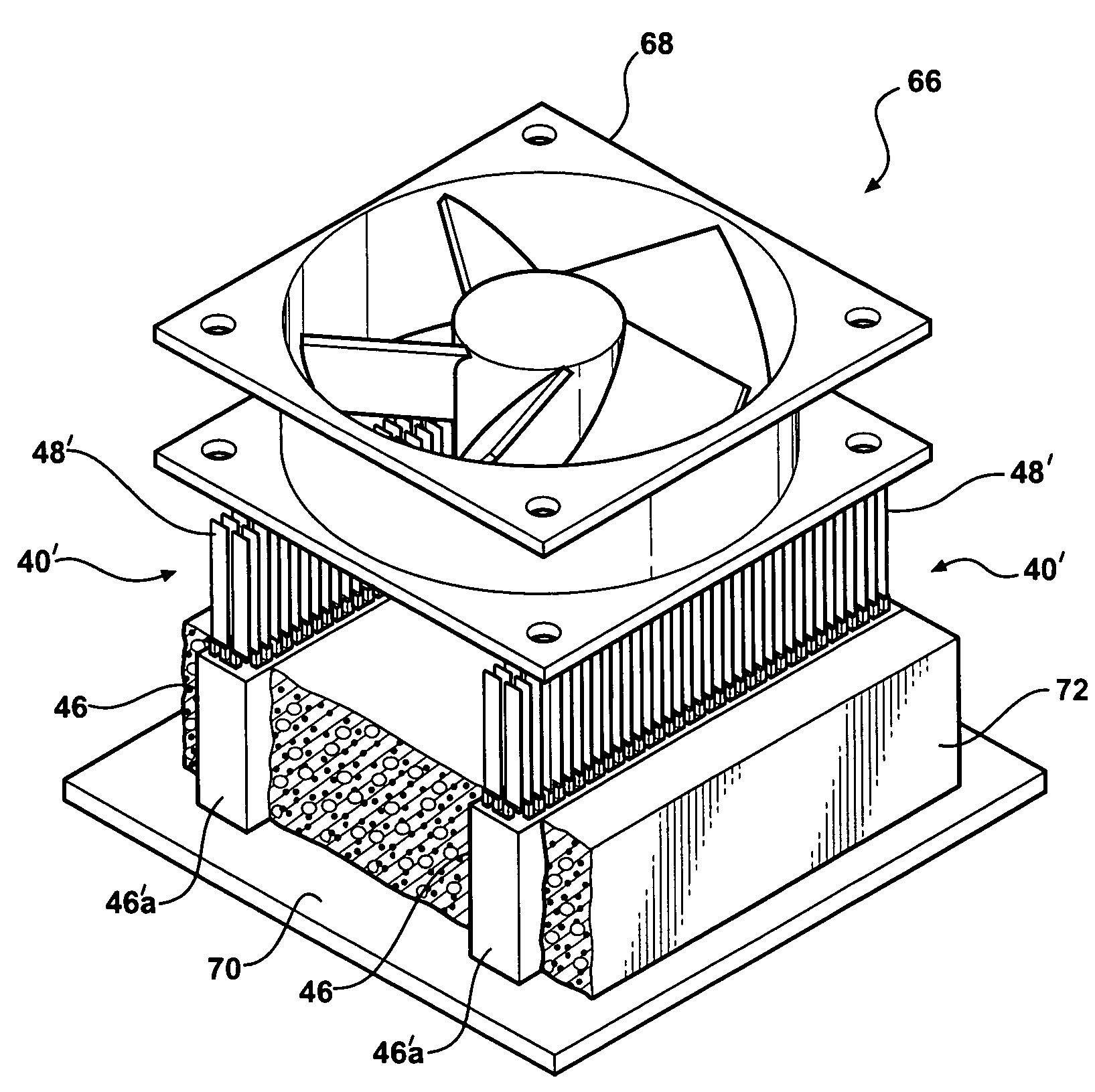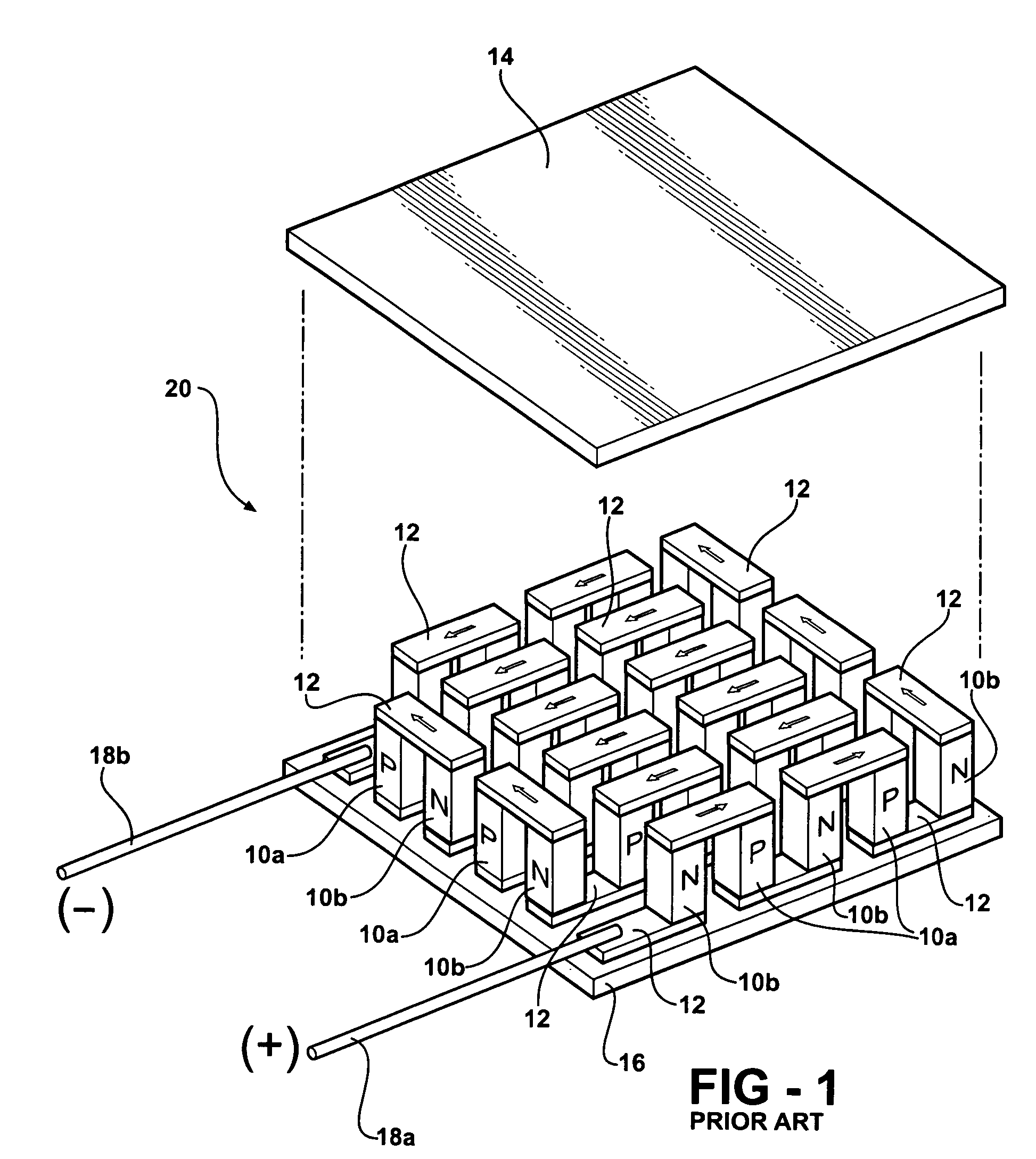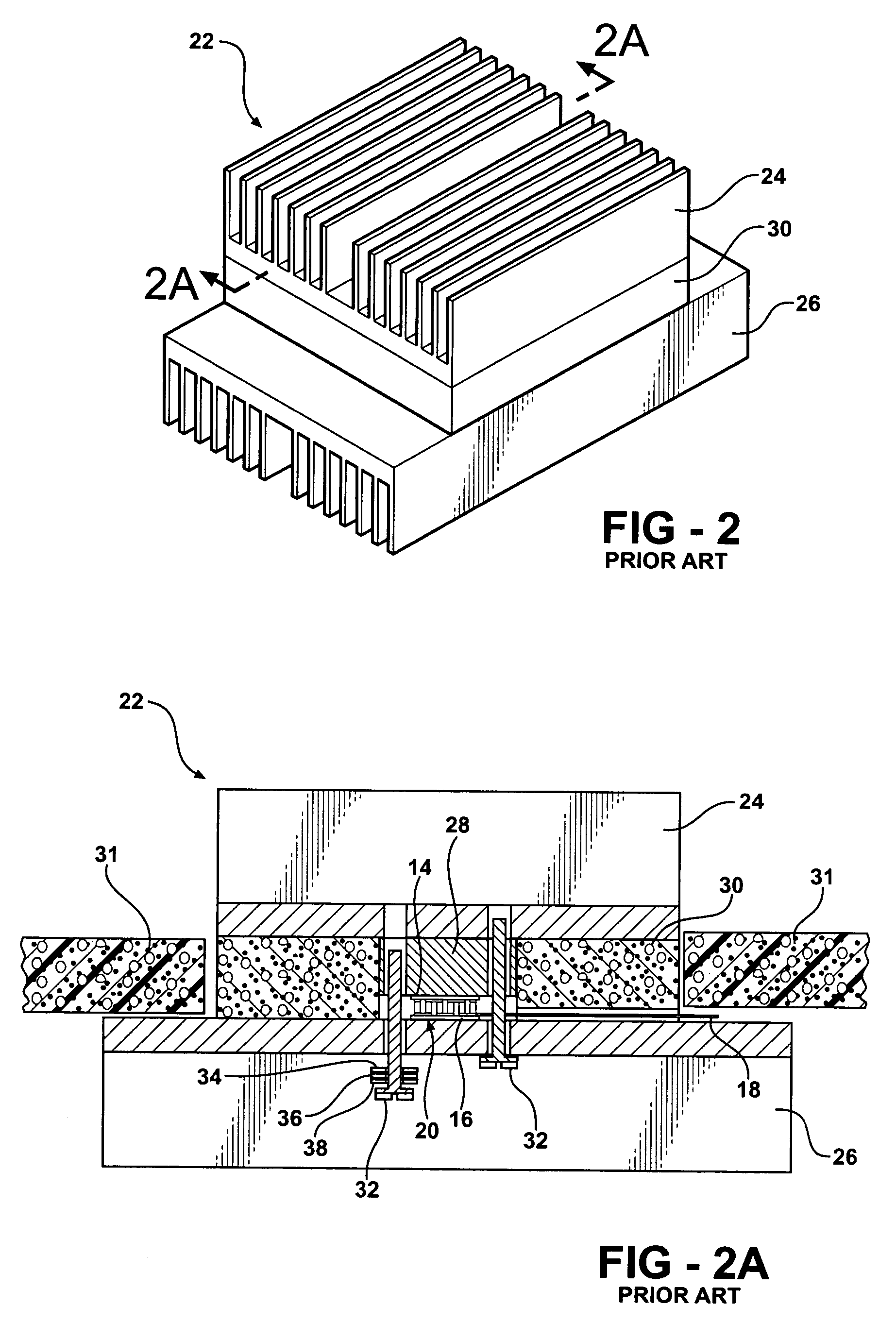Thermoelectric heat pump with direct cold sink support
a heat pump and sink technology, applied in the field of thermoelectric heat pumps, can solve the problems of reducing thermal efficiency, reducing thermal efficiency, and costly substrates, and achieve the effects of reducing expensive and thermally inefficient, effective sealing against moisture and moisture vapor, and reducing cos
- Summary
- Abstract
- Description
- Claims
- Application Information
AI Technical Summary
Benefits of technology
Problems solved by technology
Method used
Image
Examples
Embodiment Construction
[0037]FIGS. 3, 3A, and 3B show a preferred basic embodiment of the invention, illustrated as an integrated thermoelectric (TE) assembly or module 40. The typical alumina substrates have been eliminated. An array of N and P thermoelectric semiconductor elements 42a and 42b of conventional type has their heat-absorbing or “cold side” ends (the lower ends of the elements in FIGS. 3 and 3A) connected by flat copper connector tabs 44. The connector tabs 44, however, are bonded directly to a rigid, unitary cold sink 46, in the illustrated embodiment a one-piece extruded block of aluminum cut and anodized, with a thick spacer portion 46a and a plurality of heat exchanging fins 46b. Spacer portion 46a has a mounting / support surface 46c with an area preferably greater than the area 46d (FIG. 3B, broken lines) bounding the array of P / N elements 42a and 42b. Cold-side connectors 44 are preferably attached to cold sink 46 with a thermally conductive adhesive (not shown) in known manner, and to ...
PUM
 Login to View More
Login to View More Abstract
Description
Claims
Application Information
 Login to View More
Login to View More - R&D
- Intellectual Property
- Life Sciences
- Materials
- Tech Scout
- Unparalleled Data Quality
- Higher Quality Content
- 60% Fewer Hallucinations
Browse by: Latest US Patents, China's latest patents, Technical Efficacy Thesaurus, Application Domain, Technology Topic, Popular Technical Reports.
© 2025 PatSnap. All rights reserved.Legal|Privacy policy|Modern Slavery Act Transparency Statement|Sitemap|About US| Contact US: help@patsnap.com



